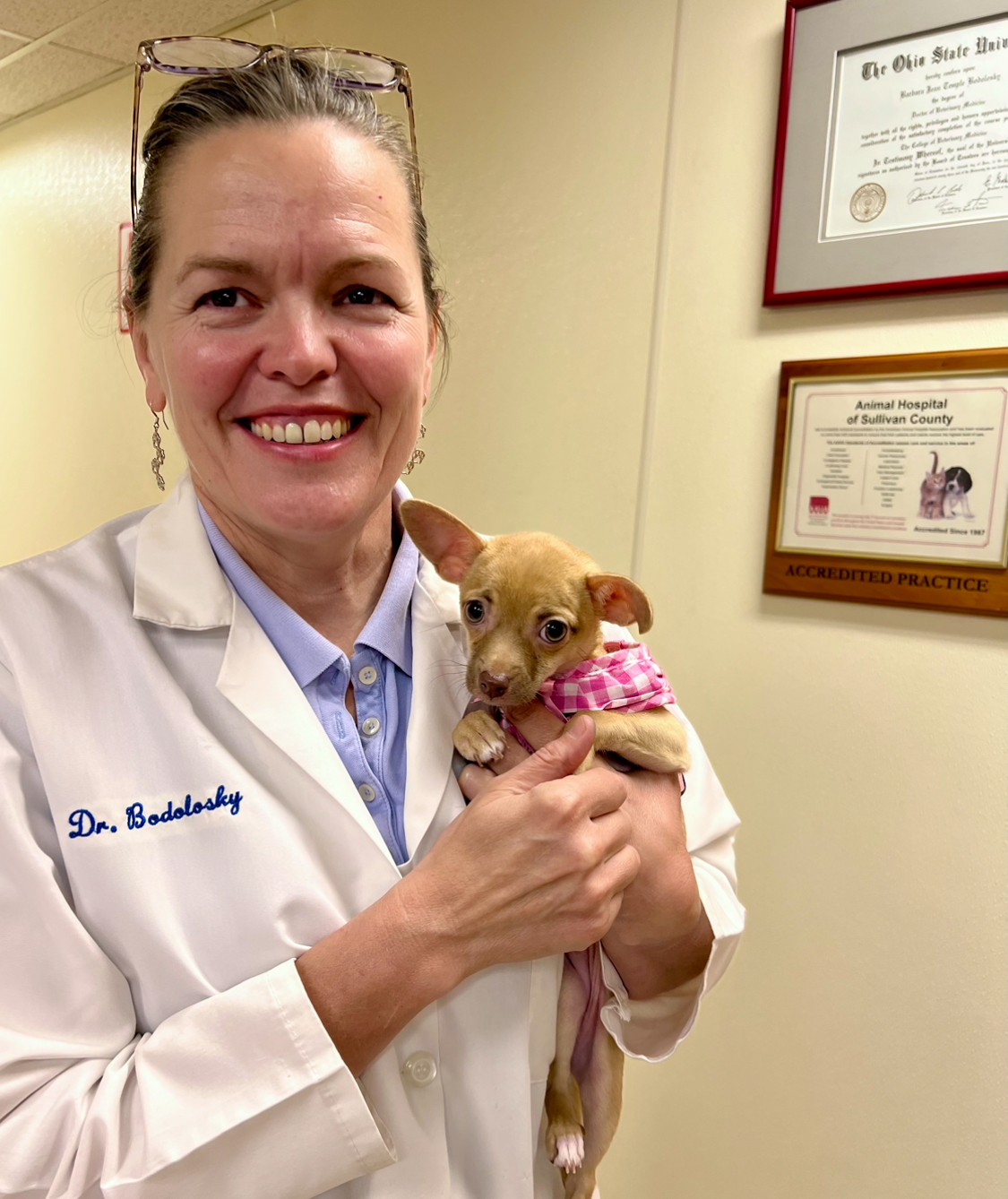
Strangest Animal?
“What’s the strangest animal you’ve ever had to treat?” someone recently asked me. I actually had to stop and think. You see, I graduated from the Ohio State College of Veterinary Medicine, oh, a few years back. (Okay, it was 1993.) My first job after college was at a small/exotic animal practice in Columbus, Ohio. I should probably emphasize the words EXOTIC and OHIO, because both are important to keep in mind, given what’s to come. I grew up in Northwest Ohio. And I knew as a little girl that I wanted to practice veterinary medicine. Being a vet generally isn’t a decision people make for financial reasons—it’s more like a calling. The love for animals really should be a driving force in any prospective vet’s personality. Now, I should probably tell you an important thing about the Ohio I grew up in. People could keep practically any exotic animal they wanted as companions. Practically…any…exotic…animal. Okay, I just did a quick search on Google, and Ohio still allows for a number of exotic animals to be kept as pets, as long as they’re treated humanely. These include foxes, coyotes, skunks, opossums, and bats. But in 2011, a suicidal exotic animal owner in Zanesville, OH, set his flock free, resulting in the so-called “Zoo Massacre.” Almost fifty beautifully unique animals had to be put down. And angry legislators understandably acted quickly. As such, it is no longer legal to own hyenas, lions, tigers, jaguars, bears, elephants, hippos, alligators, crocs, Komodo dragons, and numerous other off-the-beaten-path-type creatures in that state. But, of course, all of those animals—and more!—were perfectly legal to own back when I started practicing. And I treated the vast majority of them. Now, in veterinary school, I was trained to treat the more common pets. You know, dogs and cats. We were also trained to work with farm animals like cows, goats, pigs, and sheep. And we got experience working with horses. Honestly, you don’t spend a whole lot of time in school working on bears or crocs or giraffes. But that didn’t stop people from having them, at least back then. And if you’re an animal lover—which, have I mentioned, practitioners of veterinary medicine pretty much are?—you want to do your best when even the most exotic of creatures gets injured or sick. So, when I had to treat a bear, it helped that a bear’s anatomy is very much like that of a pig. It also helped to know which animals chew cud and which don’t. As I mentioned, I was trained to work with cows in school, which actually helps a ton the first time you’re treating a giraffe. Both have four stomachs and chew cud. Okay, back to the question…the strangest animal I’ve ever treated… Well, I can’t make that call. We handled a wide range of different pets. Bobcats. Rats. Mice. Opossums. You get the idea. True, it would be strange to see someone waiting to see me at the office in Ferndale today with a rhino on a leash. But it’s all about context. It wouldn’t be strange at all to see me treat the same rhino at, say, a zoo. But I can tell you about one of the nicest animals I ever treated. He was a beaver. And he was having a difficult time regulating his own body temperature. We helped him out by filling a kiddie pool with water and maintaining his temperature that way. Well, he was just like a dog—friendly, fun-loving, looking to please. Everybody who came in contact with him adored him. I still smile when I think of him today. So…I know these stories have got you thinking, “I love animals! Maybe veterinary medicine is for me!” And maybe it is. As I mentioned, it’s been—ahem—a little while since I had to get into veterinary school myself. But my daughter is heading that way, so I’m familiar with the current process. Plus, the America Veterinary Medical Association (www.avma.org) has some good advice. To begin with, have I mentioned that you to have an unwavering love of animals? That’s crucial. You should also be very good in science and math. Then, of course, grades matter. A quick Google search revealed that most veterinary schools require a 3.0 GPA, but they really don’t consider anyone with under a 3.5. The AVMA points out, “When a school sees an ‘A,’ they think you studied hard, did well, and learned.” It helps to be well-rounded, too. Find leadership positions in your current school, job, or community. Student government might be good. Learn how to work well with others. Communication skills are important—take classes that will help you to explain to your future clients exactly what is going on with their animal companions. If there’s a pre-vet club, join it. If one doesn’t exist, maybe start it yourself. Also, find a way to work with or around animals. It’s great to be active in 4-H. It also helps to volunteer at local shelters. You might even work as a volunteer at a local veterinary clinic. And look at more than one college—determine what courses they might require, what other prerequisites they might want you to have. The AVMA recommends taking classes in anatomy, zoology, and micro-biology, among others. Plus, letters of recommendation from your undergrad professors are important, as are good grades on the GRE exam. One of the big changes between when I graduated and today is that actual surgery on live animals isn’t taught in veterinary colleges anymore. You might find surgical simulators or auto-tutorials, but you won’t perform actual surgeries until you get hired on your first job. It’s during that time that you’ll observe and then perform supervised surgeries. You might find this to be a bit frightening, but it generally works out in the end. Just so you know, we do surgeries at the Animal Hospital of Sullivan County. We also provide caring boarding for when you need to be away from your furry best friend. Be in touch with questions about us. We’re here for you. And don’t worry…you won’t see a rhino in our waiting room. Dr Barbara J Bodolosky DVM 667 Harris Rd Ferndale NY 12734 AAHA Accredited www.ahofsc.com 845-292-6711


